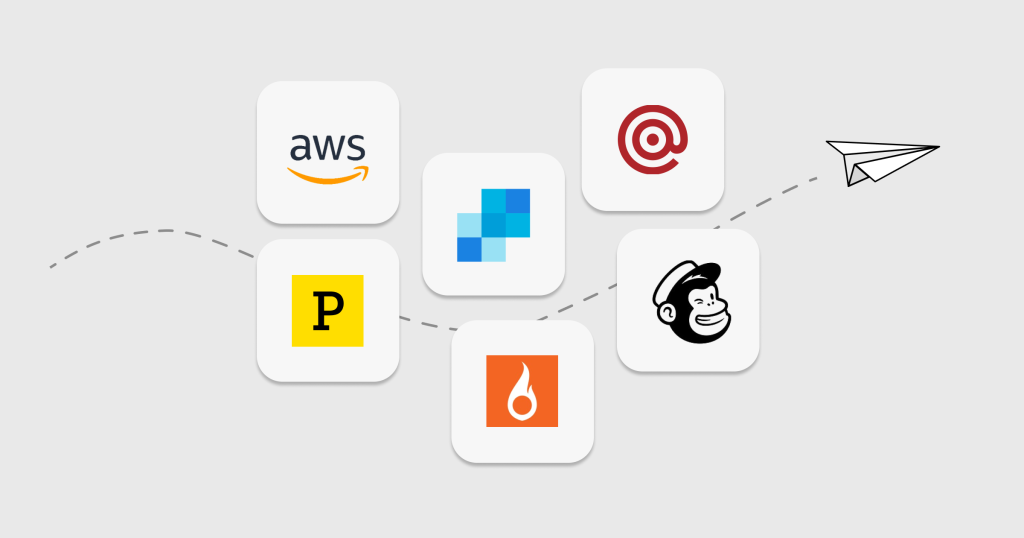If you’re building a modern web app or online store, one feature is absolutely non-negotiable: transactional email. Whether it’s password resets, order confirmations, or signup verifications, users expect instant, reliable, and secure email communication.
However, sending these emails isn’t always straightforward. Many cloud hosts—like DigitalOcean, Hetzner, or AWS EC2—block SMTP ports (25, 465, 587) by default to prevent spam and abuse. This means you can’t just configure a mail server on your VPS and expect emails to go through. Your only real option becomes using third-party transactional email services that offer reliable Email APIs.
In this article, we’ll break down:
- What transactional email really is (and isn’t)
- Why you can’t rely on SMTP anymore
- Top transactional email services in 2025 (including some lesser-known but promising ones like SpaceMail)
- Pricing and use case comparisons
- Tips to pick the right one for your app or business
What is a Transactional Email?

Transactional emails are messages sent automatically to users in response to their actions. Examples include:
- Password reset links
- Order confirmations
- Account activation
- Shipping notifications
- 2FA codes
These emails are not marketing. They usually contain personalized, user-specific content. They must arrive fast, land in the inbox, and be secure.
Marketing emails, on the other hand, are bulk emails—like newsletters or product promotions—often sent to large lists at once. Sending marketing emails via a transactional email service can violate terms of use and hurt your deliverability.
Why SMTP Is a Problem (Especially on VPS Hosts)

If you’re hosting your site or app on providers like DigitalOcean, Hetzner, or even Google Cloud, you may find that SMTP ports are blocked by default. This is done to:
- Prevent spam
- Avoid IP blacklisting
- Force users to use trusted third-party services
Even if you manage to open those ports, running your own mail server is a pain:
- You need to set up SPF, DKIM, DMARC
- You’ll deal with blacklists and spam filters
- Logging and debugging issues is time-consuming
That’s why most developers turn to transactional email APIs.
Email API vs. SMTP: What’s the Difference?
- SMTP is a universal email protocol. It’s older, harder to debug, and more prone to failure.
- Email APIs are modern, REST-based endpoints (usually JSON) for sending emails. They’re faster, offer detailed logs, templates, and retry logic.
If you’re using modern frameworks (Laravel, Node.js, WordPress, Rails), you can easily plug in services like SendGrid, Postmark, or SpaceMail via an API key and SDK or plugin.
Top Transactional Email Services in 2025 (with Comparison)

We pulled together feedback from developers (like this Reddit thread) and tested out some providers to give you a snapshot of what’s available:
| Provider | Starting Price | Free Tier | API Performance | Dashboard UX | Notes |
|---|---|---|---|---|---|
| Postmark | $15/mo | 100 test emails/mo | Fast | Excellent | Best for speed + deliverability |
| SpaceMail | $5/mo | 100 emails/day | Fast | Clean + simple | Great low-cost alternative |
| SendGrid | $19.95/mo | 100 emails/day | Good | Complex | Industry standard, but bloated |
| Mailgun | $35/mo | 5K emails (1 month) | Good | Dev-friendly | Watch for price creep |
| Resend | $10/mo | 3K emails/mo | Excellent | Minimal | Simple, DX-focused |
| Amazon SES | Pay-as-you-go | 62K/mo (on EC2 only) | Fast | Poor UX | Cheap but hard to set up |
💡 Developer Tip:
If you’re sending under 3,000 emails per month, SpaceMail and Resend offer the best bang for your buck in 2025.
When to Use What?
- Startup or Indie Dev? → Try SpaceMail or Resend
- Security-first app or fintech? → Use Postmark (best in deliverability)
- High email volume with dev ops? → Consider Amazon SES, but be ready for a steeper learning curve
- Already on SendGrid? → Watch your logs closely. Many devs complain of random bounces and lack of support.
Real-World Advice from Developers (2025)
Some insights from the Reddit thread:
- Postmark is praised for “actually arriving fast” and not getting throttled.
- SendGrid gets flak for poor support and shady deliverability.
- Resend is winning fans for its minimalism and great DX.
- SpaceMail is emerging as a favorite for small teams because of its clean UI and good pricing.
Final Thoughts: What You Should Know Before Picking a Provider
- Always separate transactional and marketing emails.
- Use Mailchimp, Brevo, or ConvertKit for newsletters.
- Use Postmark or SpaceMail for password resets and order confirmations.
- Check if your hosting provider blocks SMTP.
- If yes, use a service that supports Email API only.
- Don’t overpay.
- Many services scale fast in price. Know your email volume and shop accordingly.
- Monitor your delivery logs.
- Just because your app says “sent” doesn’t mean the email arrived. Good providers show bounces, spam flags, and delivery timestamps.
TL;DR
- Transactional emails ≠ marketing emails
- SMTP is outdated and often blocked on cloud hosting
- Use an Email API service like Postmark, SpaceMail, or Resend
- Choose based on volume, budget, and ease of use
- SpaceMail is a solid new contender for developers in 2025
Want to automate WooCommerce order emails, SMS, and alerts? Try Hippoo.app – built for WooCommerce automation lovers.
